Previously published, Galveston County Daily News, Jan 23, 2019
Opiate Use Disorder is claiming lives by the tens of thousands. The Center for Disease Control reported 47,600 deaths in the US involving opioids in 2017, concluding that the opioid overdose epidemic continues to worsen with increased in deaths involving synthetic opioids such as fentanyl. In the state of Texas, deaths attributable to opioids rose three times from 1999-2015 with increasing impact on maternal mortality and neonatal abstinence syndrome.
The UTMB Department of Family Medicine recently submitted a grant proposal to improve education and clinical practice by training and outreach to rural areas hardest hit by this growing scourge. Many of those with OUD started on prescription medications and then moved onto black market products like heroin, fentanyl, and diverted OxyContin.
Controlled substance contracts, the statewide Prescription Monitoring Program, limiting initial opiate prescriptions, automated electronic medical record notifications about the use of Naloxone, medical provider and public awareness are all part of the solution.
The use of auricular (ear) acupuncture for substance abuse, alleviating withdrawal symptoms, behavioral health, and pain management is a safe, widely researched, and long-standing adjunctive treatment modality. The National Acupuncture Detoxification Association (NADA protocol) is the best known of the methods and has been practiced widely for over 30 years. It involves application of 3 to 5 needles at specified ear points, is simple to learn and to apply, and enjoys wide patient acceptance.
The clinical application of ear acupuncture for substance use since it was first found effective in easing withdrawal symptoms from opium and heroin in Hong Kong in the 1970’s. Since then, research and practice-based evidence continues to accumulate and drive its use along with safety, ease of application, and patient acceptance.
The broad application of NADA to alcohol, opiate, 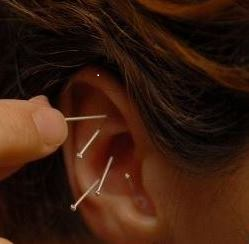 tobacco, methamphetamine, and cocaine abuse makes it a promising adjunct to medical and behavioral treatment methods in a very challenging patient population. Additionally, the NADA protocol has been used for stress management, including post-traumatic stress, treating addicted pregnant women, sleep disorders, and anxiety. It has been used in refugee camps, post-hurricane settings, prisons, hospitals, rehabilitation treatment centers, as well as outpatient clinics, predominantly in a group treatment context.
tobacco, methamphetamine, and cocaine abuse makes it a promising adjunct to medical and behavioral treatment methods in a very challenging patient population. Additionally, the NADA protocol has been used for stress management, including post-traumatic stress, treating addicted pregnant women, sleep disorders, and anxiety. It has been used in refugee camps, post-hurricane settings, prisons, hospitals, rehabilitation treatment centers, as well as outpatient clinics, predominantly in a group treatment context.
Practitioners emphasize that so-called “acudetox” is an adjunctive, not a standalone treatment for easing withdrawal symptoms as well as maintenance of abstinence. It is most effective when applied with standard therapy, behavioral interventions, and/or 12-step programs.
Physiological studies have shown auricular acupuncture acts on neuroendocrinological pathways include serotonin, dopamine, endorphin, dynorphin, and GABA receptors which mediate its effects on pain management. The Battlefield Acupuncture protocol using 5 tiny tacks in each ear has been increasingly used since the early 2000’s when it was first applied in military settings. It can also be highly and immediately effective in acute problems like migraine and chronic problems such as back or muscle pain.
Other non-pharmacological treatments such as mindfulness, anti-inflammatory herbs and supplements, chiropractic, massage, hypnosis, diet, exercise, physical therapy, yoga and tai chi can also be part of a rational integrative pain management plan that doesn’t involve the risk of using addicting opiates.
“If I cannot do great things, I can do small things in a great way.”
---Martin Luther King, Jr.

.jpg?width=1973&name=Acupuncture%20(5).jpg)
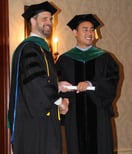 of schooling required. People are often shocked to learn that a Master Degree is required before they may sit for the National Boards exams. What’s more, this is not your standard two year Master’s. AOMA’s program is 203.5 quarter credits (equal to 135.6 semester credits), typically takes four and a half years, and involves a total of 2970 instructional hours. Of those, 161.5 of the credits, or 1962 hours are Didactic and 42 credits, 1008 hours, are clinical.
of schooling required. People are often shocked to learn that a Master Degree is required before they may sit for the National Boards exams. What’s more, this is not your standard two year Master’s. AOMA’s program is 203.5 quarter credits (equal to 135.6 semester credits), typically takes four and a half years, and involves a total of 2970 instructional hours. Of those, 161.5 of the credits, or 1962 hours are Didactic and 42 credits, 1008 hours, are clinical..jpg?width=136&name=Classroom_Blood%20Pressure%20(1).jpg) working alongside other healthcare providers with the best interest of the patient in mind. To this end AOMA’s program covers a wide range of biomedical topics including Medical Biochemistry, Pathophysiology, and Biomedical Pharmacology among others.
working alongside other healthcare providers with the best interest of the patient in mind. To this end AOMA’s program covers a wide range of biomedical topics including Medical Biochemistry, Pathophysiology, and Biomedical Pharmacology among others.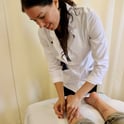 acupuncture programs require a lot of clinical and hands on laboratory hours. As mentioned earlier, 1008 of AOMA’s 2970 instructional hours are clinical, this translates to 34%, one third of the program. This process begins with Clinic Theater I in which students are exposed to the diagnostic methods of TCM including the techniques and application of acupuncture and Chinese herbal medicine by observing professional treatments performed by a member of the AOMA faculty. This culminates in a full clinical internship, in which the student, as a supervised intern, performs the intake, diagnosis, and treatment of patients.
acupuncture programs require a lot of clinical and hands on laboratory hours. As mentioned earlier, 1008 of AOMA’s 2970 instructional hours are clinical, this translates to 34%, one third of the program. This process begins with Clinic Theater I in which students are exposed to the diagnostic methods of TCM including the techniques and application of acupuncture and Chinese herbal medicine by observing professional treatments performed by a member of the AOMA faculty. This culminates in a full clinical internship, in which the student, as a supervised intern, performs the intake, diagnosis, and treatment of patients.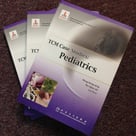 academic backgrounds, and published research. At AOMA there are 37 faculty members, including 29 Licensed Acupuncturists, 7 Medical Doctors, 2 Ph.D.’s and 6 faculty members who hold both an MD and a Ph.D. AOMA Graduate School is also the home of the only Chinese herbal pharmacologist Ph.D. in the United States. About two thirds of our faculty bring to the table at least a decade of tenure and many years of training and practicing TCM in China.
academic backgrounds, and published research. At AOMA there are 37 faculty members, including 29 Licensed Acupuncturists, 7 Medical Doctors, 2 Ph.D.’s and 6 faculty members who hold both an MD and a Ph.D. AOMA Graduate School is also the home of the only Chinese herbal pharmacologist Ph.D. in the United States. About two thirds of our faculty bring to the table at least a decade of tenure and many years of training and practicing TCM in China.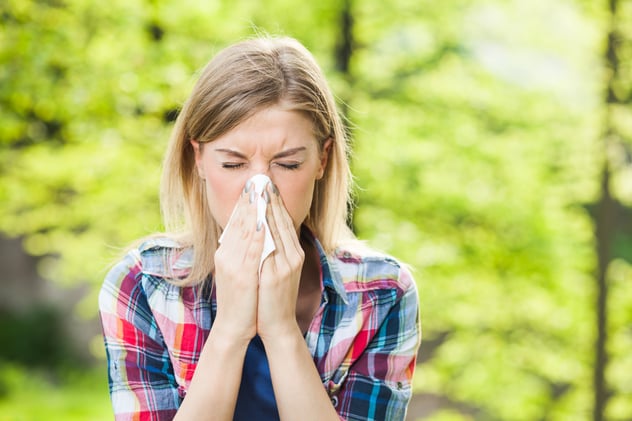


 Sean spent 8 1⁄2 years (1991 to 2000) as a US Navy Hospital Corpsman. He saw tours of duty at National Naval Medical Center Bethesda, Maryland; Naval Medical Center San Diego, California; as well as 1st Marine Division, Camp Pendleton. While stationed at 1st Light Armored Reconnaissance Battalion, 1st Marine Division, Sean deployed to multiple international locations and saw combat action in support of Operation United Shield, Somalia in 1995.
Sean spent 8 1⁄2 years (1991 to 2000) as a US Navy Hospital Corpsman. He saw tours of duty at National Naval Medical Center Bethesda, Maryland; Naval Medical Center San Diego, California; as well as 1st Marine Division, Camp Pendleton. While stationed at 1st Light Armored Reconnaissance Battalion, 1st Marine Division, Sean deployed to multiple international locations and saw combat action in support of Operation United Shield, Somalia in 1995.